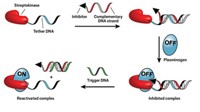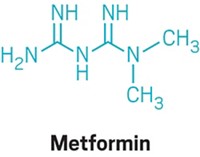Advertisement
Grab your lab coat. Let's get started
Welcome!
Welcome!
Create an account below to get 6 C&EN articles per month, receive newsletters and more - all free.
It seems this is your first time logging in online. Please enter the following information to continue.
As an ACS member you automatically get access to this site. All we need is few more details to create your reading experience.
Not you? Sign in with a different account.
Not you? Sign in with a different account.
ERROR 1
ERROR 1
ERROR 2
ERROR 2
ERROR 2
ERROR 2
ERROR 2
Password and Confirm password must match.
If you have an ACS member number, please enter it here so we can link this account to your membership. (optional)
ERROR 2
ACS values your privacy. By submitting your information, you are gaining access to C&EN and subscribing to our weekly newsletter. We use the information you provide to make your reading experience better, and we will never sell your data to third party members.
Pharmaceuticals
Nanocomplexes Help Regulate Blood Clotting
Nanomedicine: Particles release heparin in response to increased thrombin activity that leads to blood clotting
by Celia Henry Arnaud
August 29, 2014

Blood coagulation is a balancing act. Too much clotting can lead to strokes. But not enough clotting can lead to uncontrolled bleeding. That balance is particularly important for patients with cardiovascular diseases or trauma.
To help achieve that balance, a team of researchers led by Sangeeta N. Bhatia of Massachusetts Institute of Technology has developed nanoparticles that regulate the cascade of enzymes involved in maintaining homeostasis. These particles, called nanoscale self-titrating therapeutics (nanoSTATs), release the anticoagulant heparin in response to the activity of thrombin, a key enzyme in the blood coagulation cascade (ACS Nano 2014, DOI: 10.1021/nn501129q).
“The idea behind the self-titrating complexes is basically to mimic homeostatic regulation in the body,” says Justin H. Lo, a graduate student in Bhatia’s group. The particles release a dose of anticoagulant that is proportional to what is needed to restore balance, he says.
The nanoSTATs are made of cationic peptides that sequester heparin. The peptides contain thrombin-cleavable sequences that alternate with
But that changes if the blood-clotting cascade gets out of control and too much thrombin is produced. The excess thrombin cleaves the peptides in the nanoSTATs, unleashing the sequestered heparin. The more active thrombin is, the more peptide gets cleaved and the more heparin gets released. Heparin interacts with antithrombin, another participant in the coagulation cascade, to inhibit thrombin, thus forming a negative-feedback loop.
In a mouse model of pulmonary embolism, mice treated with nanoSTATs had about one-fourth as many clots in their lungs as did control mice that received neither the nanoSTATs nor free heparin. The reduction of lung clots was approximately the same with nanoSTATs as it was with free heparin.
The complexes are relatively short-lived in circulation, but that might actually be a benefit. In the run-up to surgery, patients often receive long-circulating anticoagulants, says Kevin Y. Lin, a former graduate student in Bhatia’s group. “The patient needs to be taken off the drug several hours or even the day before the actual operation. With a short-circulating anticoagulant, you can make sure they have the anticoagulant up to the point that they’re going into the operating room.”
Heparin expert Robert J. Linhardt, a biochemist at Rensselaer Polytechnic Institute, calls the nanoSTAT concept “very interesting and quite novel.” However, unanswered questions remain, he says, about clearance and toxicity. “It is critical not to overstate the conclusions in a mouse model,” he says, “because mice exhibit very different responses to heparin-based therapeutics than do humans.”




Join the conversation
Contact the reporter
Submit a Letter to the Editor for publication
Engage with us on Twitter